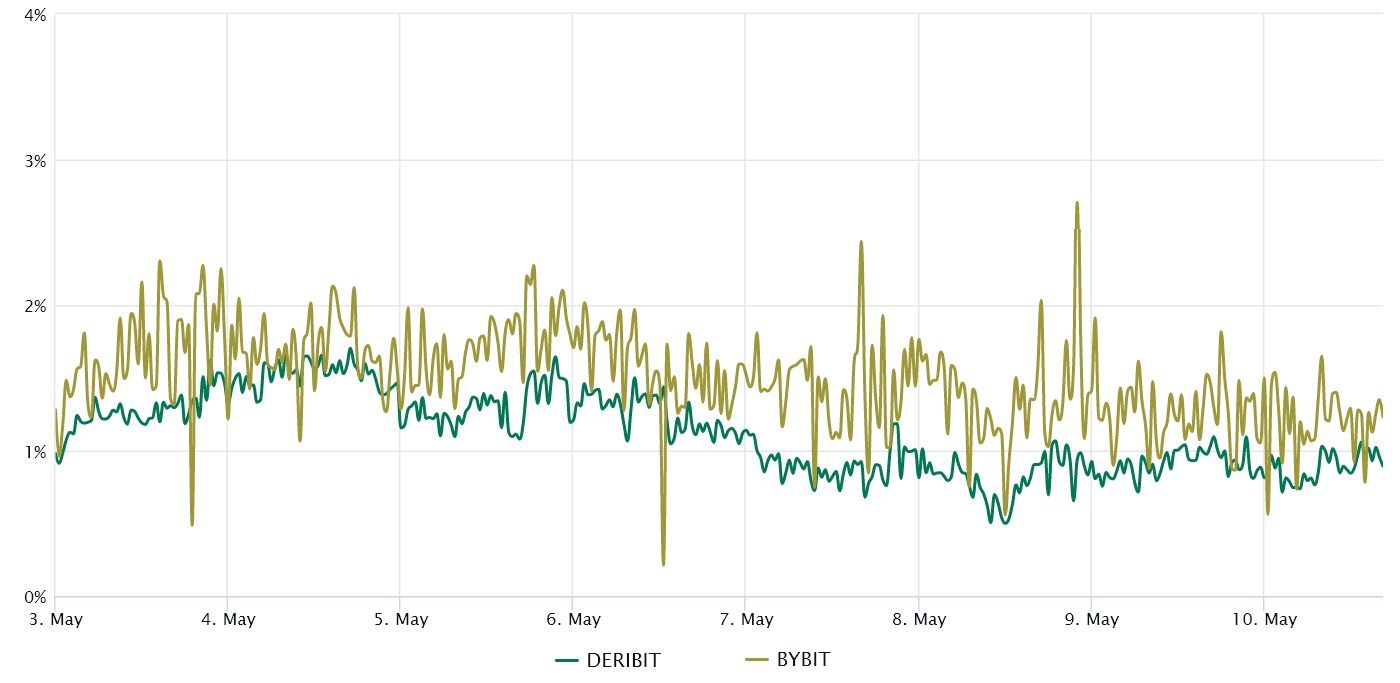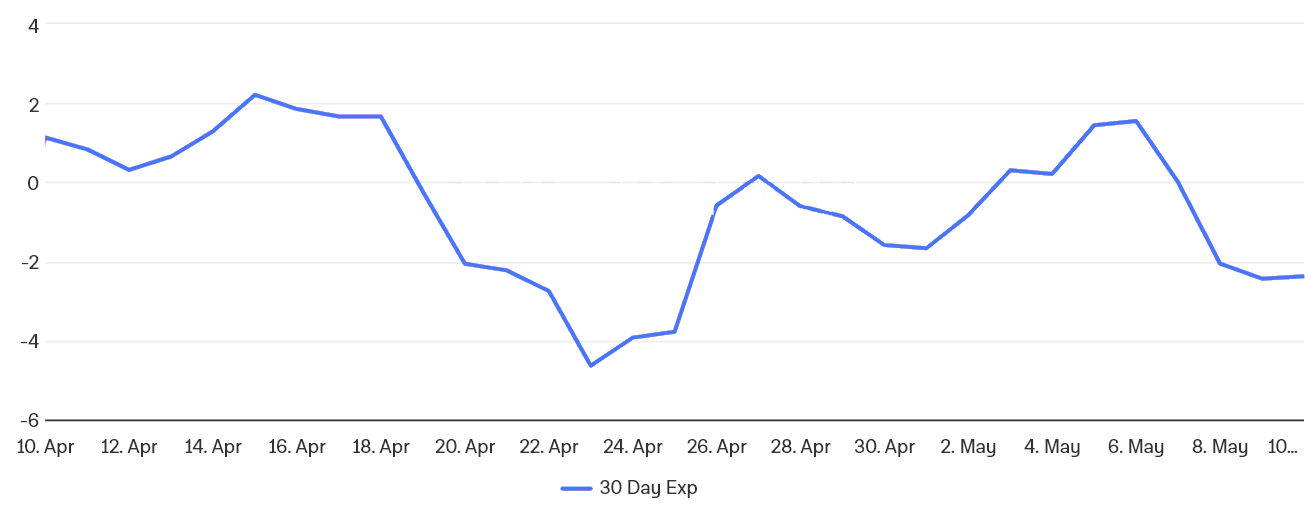After a brief overshoot above $2,000 on May 6, the Ether price has returned to a tight range between $1,820 and $1,950, which has been the norm for the past three weeks.
According to the latest Ether (ETH) futures and options data, odds favor the Ether price breaking below the $1,820 support, as professional traders have been unwilling to add neutral-to-bullish positions using derivatives contracts.

Not even the memecoin frenzy that boosted Ethereum network demand was able to instill confidence in investors. The average Ethereum transaction fee skyrocketed to $27.70 on May 6, the highest in 12 months, according to BitInfoCharts data. As reported by Cointelegraph, one of the main drivers behind the increase was the insatiable demand for Pepe (PEPE), among other memecoins.
Moreover, the increased gas fees have driven users to layer-2 solutions, which could be interpreted as a weakness. For instance, it causes a decline in the total value locked by removing deposits from the Ethereum chain, especially in decentralized finance applications.
Some analysts believe the $30 million Ether sale by the Ethereum Foundation contributed to ETH being unable to break above $2,000, as nearly 20,000 ETH were sent to the Kraken cryptocurrency exchange. The foundation’s last relevant transfer occurred in November 2021, when the price topped around $4,850 and subsequently declined by 80%.
On the macroeconomic side, the United States’ 4.9% April consumer price index (CPI) data announced on May 10, slightly below consensus, further increased investors’ expectations of stable interest rates at the next Federal Reserve meeting in June. CME Group’s FedWatch Tool showed 94% odds of stability at the current 5% to 5.25% range.
Therefore, with no signs of a Fed pivot on the horizon, the demand for risk-on assets such as cryptocurrencies should remain under pressure. But if investors fear that Ether has higher odds of breaking the three-week sideways movement to the downside, i should be reflected in the ETH futures contract premium and increased costs for protective put options.
Ether futures reflect weak demand from longs
Ether quarterly futures are popular among whales and arbitrage desks. However, these fixed-month contracts typically trade at a slight premium to spot markets, indicating that sellers are asking for more money to delay settlement.
As a result, ETH futures contracts in healthy markets should trade at a 5% to 10% annualized premium — a situation known as contango, which is not unique to crypto markets.

Ether traders have been extremely cautious in the past week, as there was no surge in demand for leverage longs during the rally above $2,000 on May 6. Presently at 1.4%, the ETH futures premium reflects a complete lack of appetite from buyers using derivatives contracts.
Ether options risk metric stood neutral
Traders should also analyze options markets to understand whether the recent correction has caused investors to become more optimistic. The 25% call-to-put delta skew is a telling sign when arbitrage desks and market makers overcharge for upside or downside protection.
In short, if traders anticipate an Ether price drop, the skew metric will drop below 7%, and phases of excitement tend to have a positive 7% skew.
Related: Arbitrum’s DAO to receive over 3,350 ETH revenue from transaction fees

As displayed above, the ETH options’ 25% call-to-put delta skew has been neutral for the past two weeks, as the protective put options were trading at a fair price relative to similar neutral-to-bullish call options.
Ether options and futures markets suggest that pro traders are not confident, especially considering the 10.6% rally between May 2-6. Therefore, the weak derivatives indicators are more likely to flip bearish if the three-week sideways movement breaks to the downside.
In other words, if Ether’s price breaks below $1,820, traders should expect a much higher appetite for bearish bets using ETH derivatives, an indicator of distrust and a lack of demand for longs.
This article is for general information purposes and is not intended to be and should not be taken as legal or investment advice. The views, thoughts, and opinions expressed here are the author’s alone and do not necessarily reflect or represent the views and opinions of Cointelegraph.
